Nvidia launches several new GameWorks libraries
Volumetric Lighting
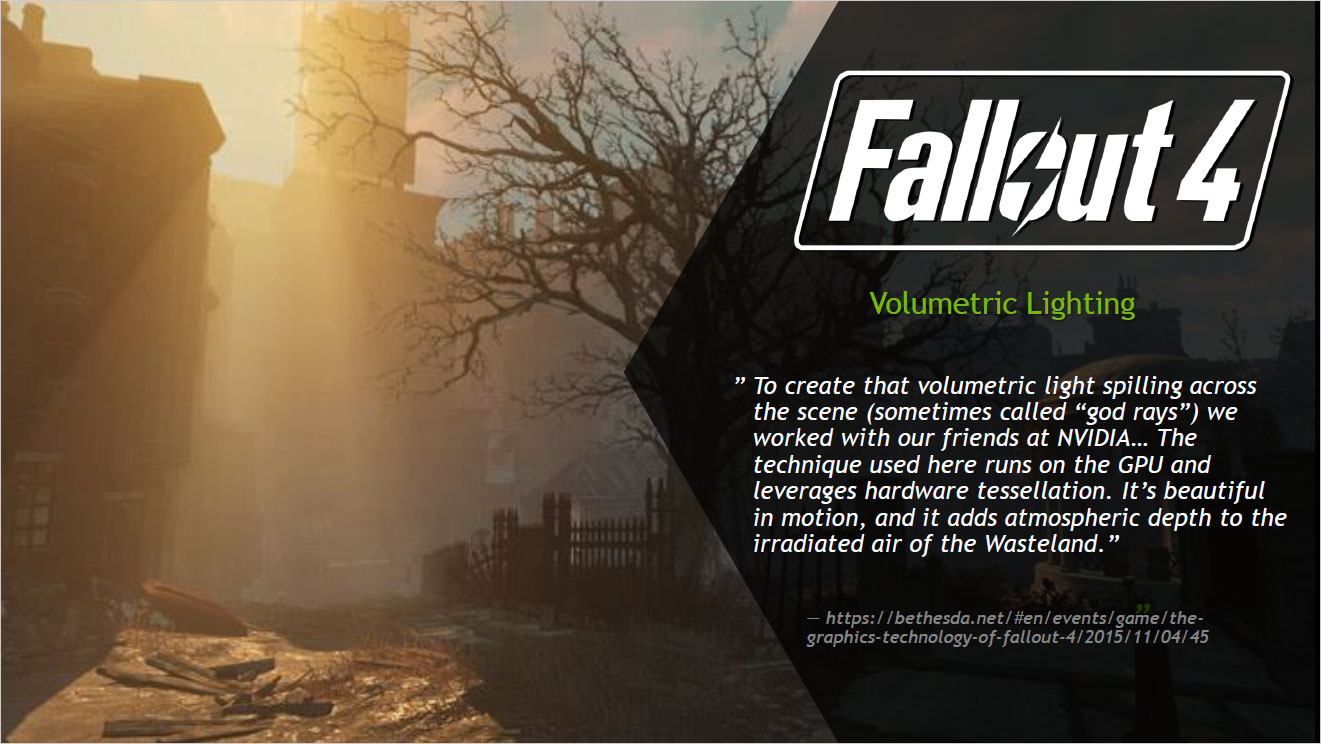
The first tech is volumetric lighting, first seen in Fallout 4 under the "God Rays" setting. The technique uses hardware tessellation to add atmospheric lighting to the environment. It's easiest to show a few slides that demonstrate how volumetric lighting works:
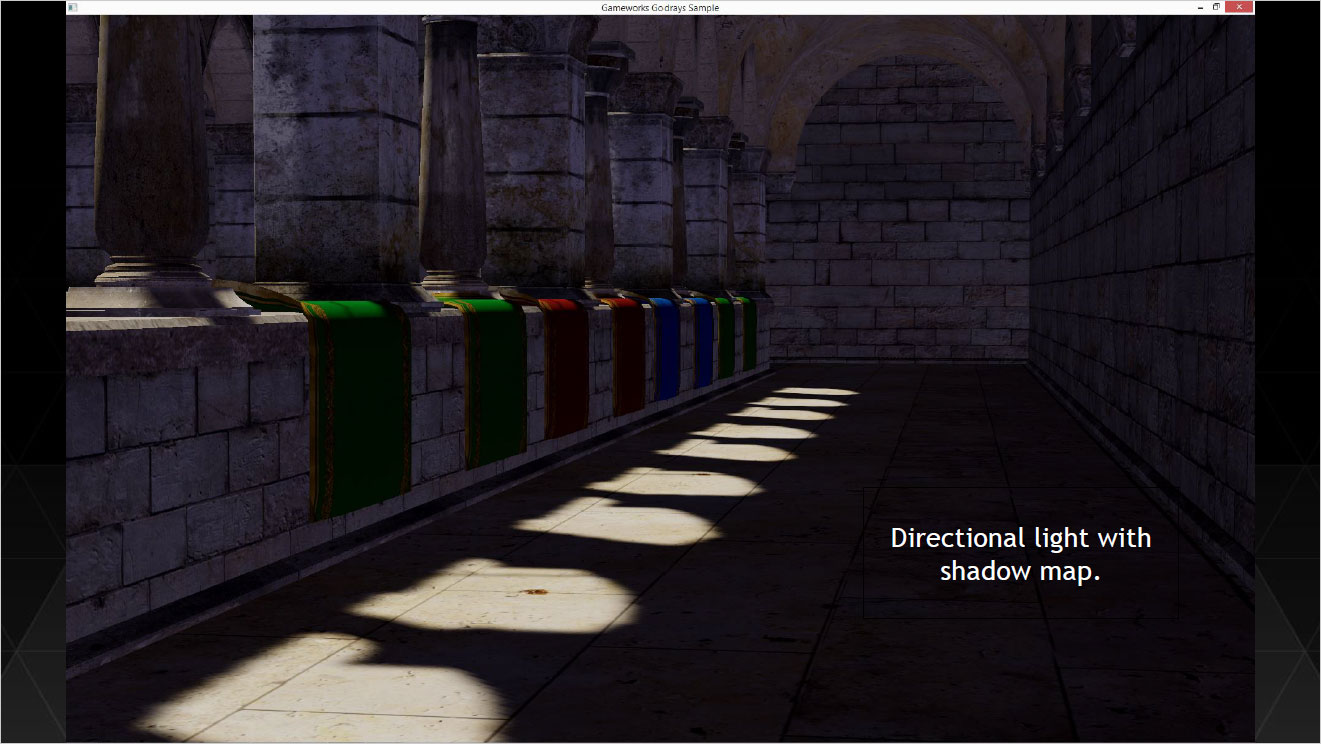
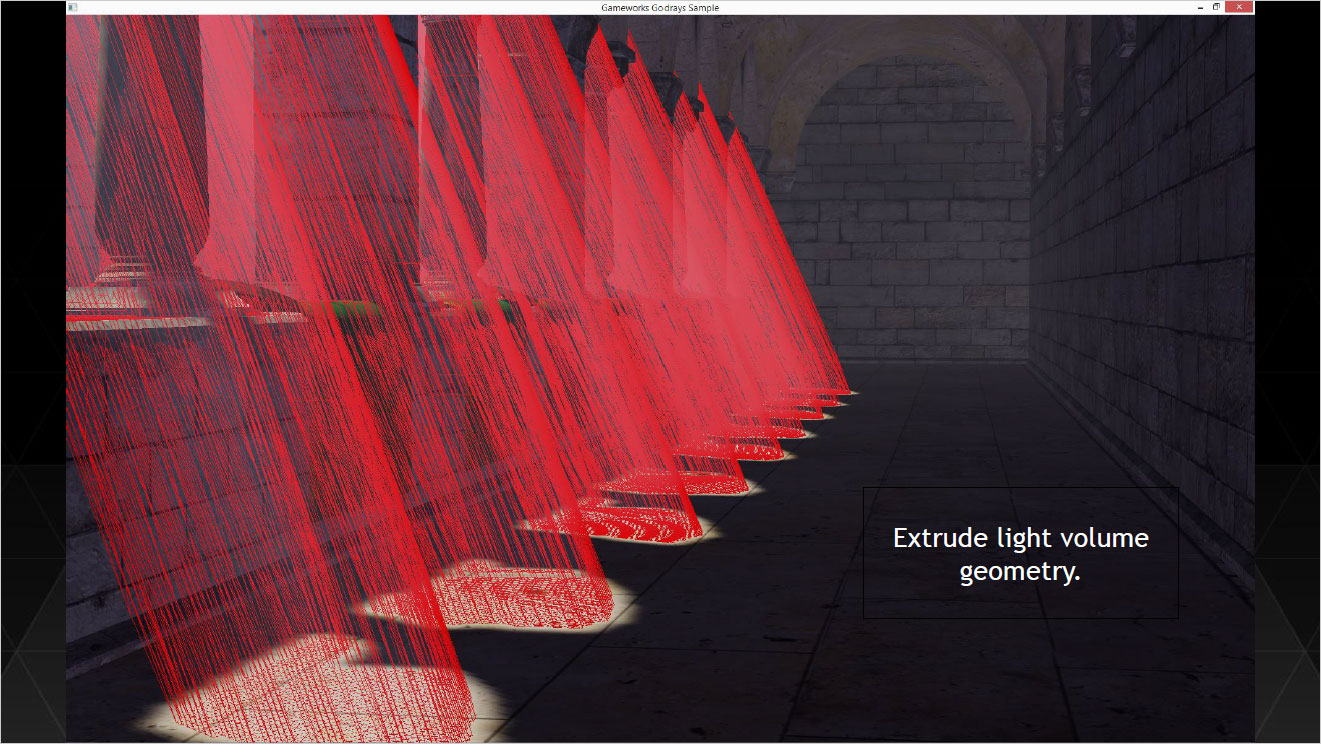
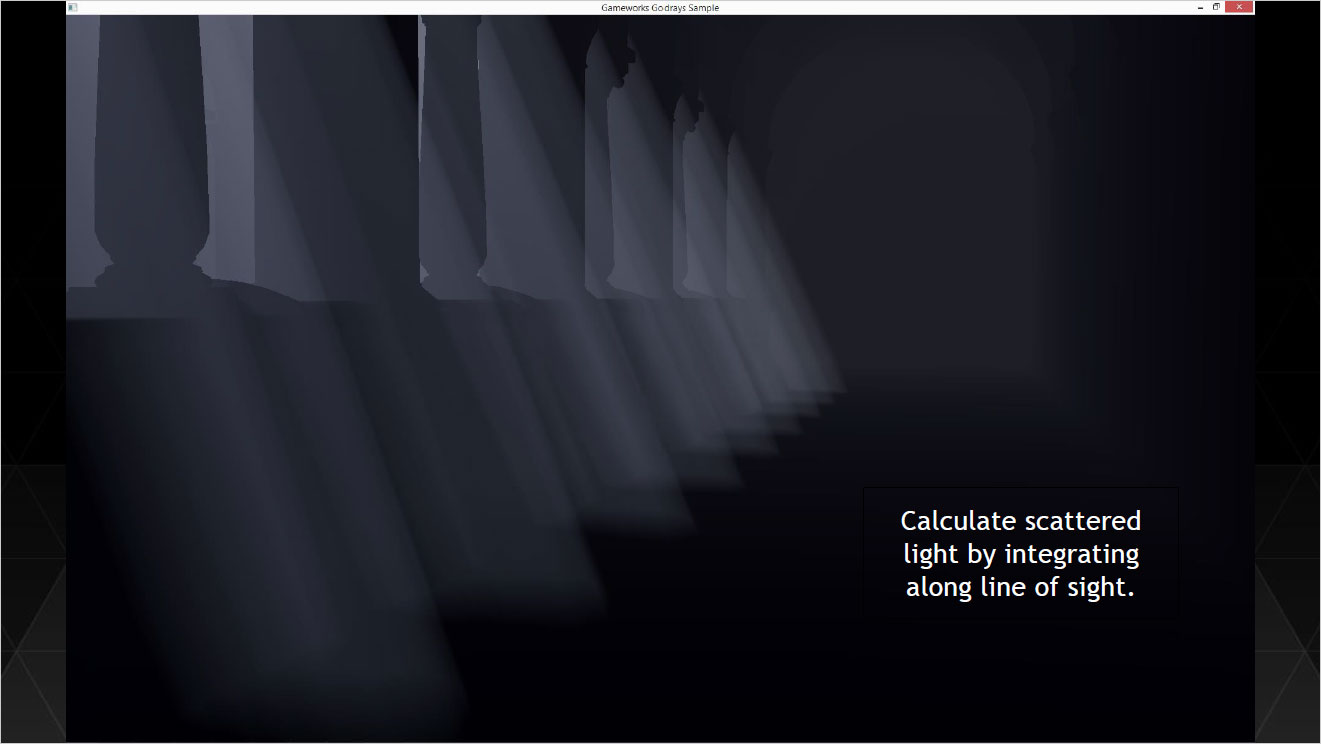
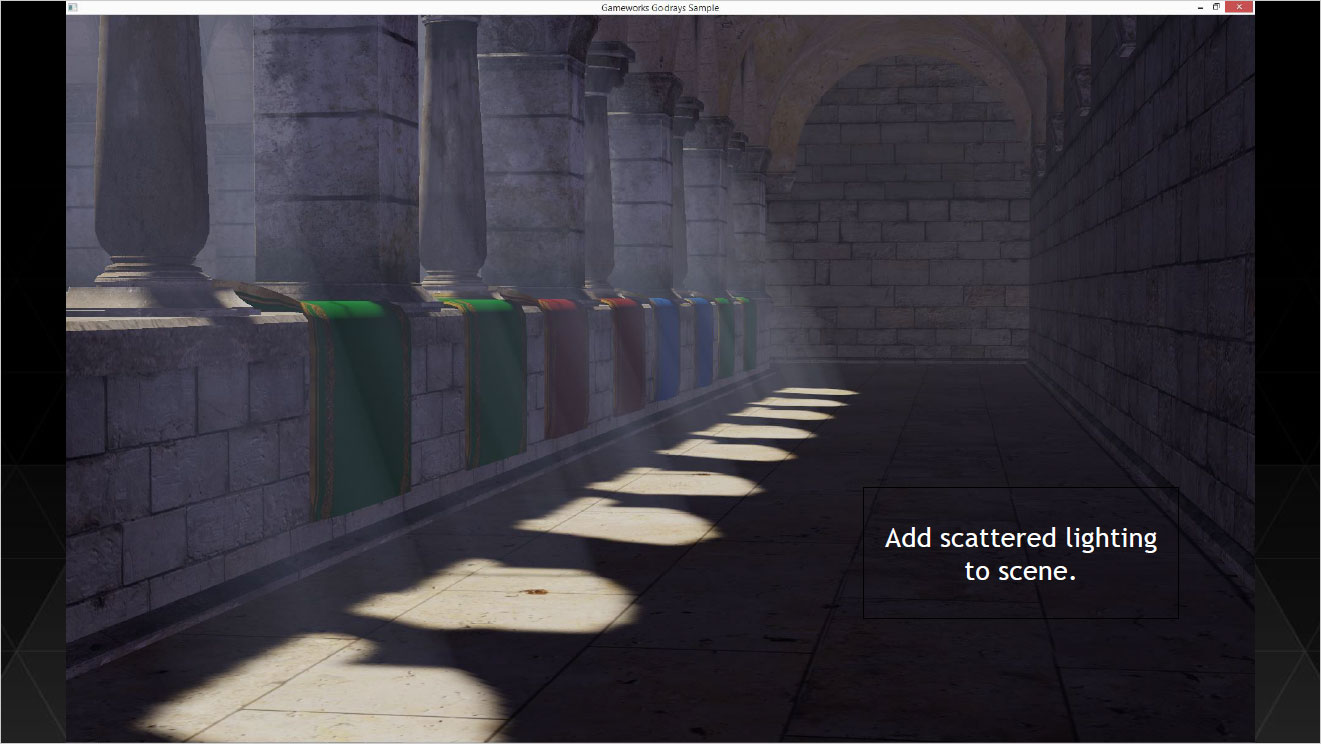
Starting with the base rendered scene, using a directional light with shadow mapping, light volumes are computed by extruding geometry, which gives the third image showing the scattered lighting. This is combined with the original shadow mapped image to create a final product, which looks far better (IMO), but the performance hit can be rather severe.
Nvidia noted a 5% drop in performance for Fallout 4 by turning on God Rays at the low setting, with a far more substantial 40% drop in performance when using the ultra setting. That might sound horrible, but when you compare Nvidia's off vs. low and the ultra vs. low, you can see that nearly all of the gains can be had using the low setting. One thing to note here is that the above scenes are a great use case for volumetric lighting, but there are many situations where volumetric lighting wouldn't show nearly as noticeable a change.
- Volumetric Lighting
- Voxel Ambient Occlusion (VXAO)
- High Fidelity Shadows
- Nvidia Flow and Rigid Body Physics, and VR Works
Keep up to date with the most important stories and the best deals, as picked by the PC Gamer team.
Jarred's love of computers dates back to the dark ages when his dad brought home a DOS 2.3 PC and he left his C-64 behind. He eventually built his first custom PC in 1990 with a 286 12MHz, only to discover it was already woefully outdated when Wing Commander was released a few months later. He holds a BS in Computer Science from Brigham Young University and has been working as a tech journalist since 2004, writing for AnandTech, Maximum PC, and PC Gamer. From the first S3 Virge '3D decelerators' to today's GPUs, Jarred keeps up with all the latest graphics trends and is the one to ask about game performance.


